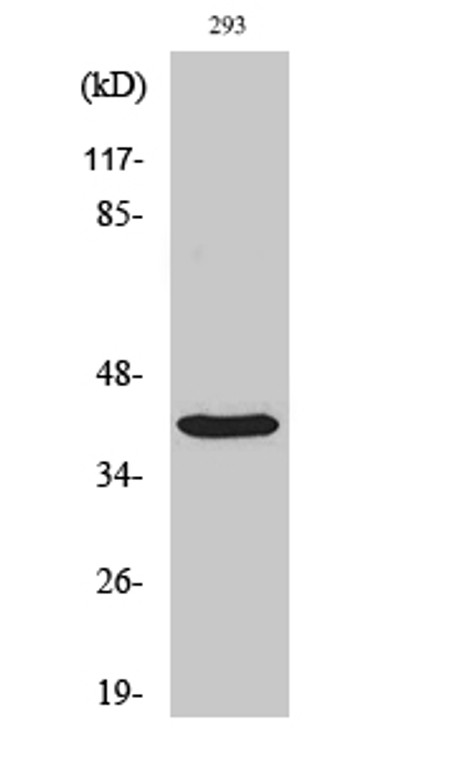| Host: |
Rabbit |
| Applications: |
WB/IHC/IF/ELISA |
| Reactivity: |
Human/Rat/Mouse |
| Note: |
STRICTLY FOR FURTHER SCIENTIFIC RESEARCH USE ONLY (RUO). MUST NOT TO BE USED IN DIAGNOSTIC OR THERAPEUTIC APPLICATIONS. |
| Short Description: |
Rabbit polyclonal antibody anti-Quinone oxidoreductase PIG3 (241-290 aa) is suitable for use in Western Blot, Immunohistochemistry, Immunofluorescence and ELISA research applications. |
| Clonality: |
Polyclonal |
| Conjugation: |
Unconjugated |
| Isotype: |
IgG |
| Formulation: |
Liquid in PBS containing 50% Glycerol, 0.5% BSA and 0.02% Sodium Azide. |
| Purification: |
The antibody was affinity-purified from rabbit antiserum by affinity-chromatography using epitope-specific immunogen. |
| Concentration: |
1 mg/mL |
| Dilution Range: |
WB 1:500-1:2000IHC 1:100-1:300ELISA 1:20000IF 1:50-200 |
| Storage Instruction: |
Store at-20°C for up to 1 year from the date of receipt, and avoid repeat freeze-thaw cycles. |
| Gene Symbol: |
TP53I3 |
| Gene ID: |
9540 |
| Uniprot ID: |
QORX_HUMAN |
| Immunogen Region: |
241-290 aa |
| Specificity: |
PIG3 Polyclonal Antibody detects endogenous levels of PIG3 protein. |
| Immunogen: |
The antiserum was produced against synthesized peptide derived from the human QORX at the amino acid range 241-290 |
| Protein Name | Quinone Oxidoreductase Pig3Nadph -Quinone Reductase Pig3Tumor Protein P53-Inducible Protein 3Protein Pig3P53-Induced Gene 3 Protein |
| Database Links | Reactome: R-HSA-6803205 |
| Alternative Antibody Names | Anti-Quinone Oxidoreductase Pig3 antibodyAnti-Nadph -Quinone Reductase Pig3 antibodyAnti-Tumor Protein P53-Inducible Protein 3 antibodyAnti-Protein Pig3 antibodyAnti-P53-Induced Gene 3 Protein antibodyAnti-TP53I3 antibodyAnti-PIG3 antibody |
Information sourced from Uniprot.org
12 months for antibodies. 6 months for ELISA Kits. Please see website T&Cs for further guidance








